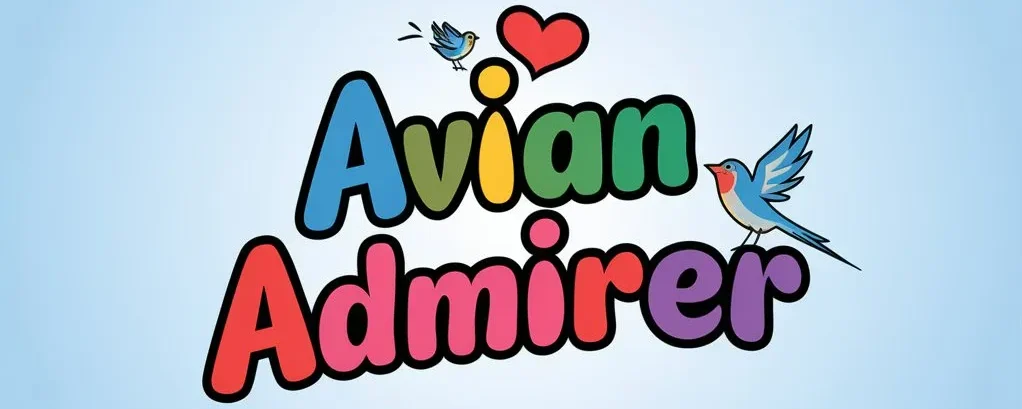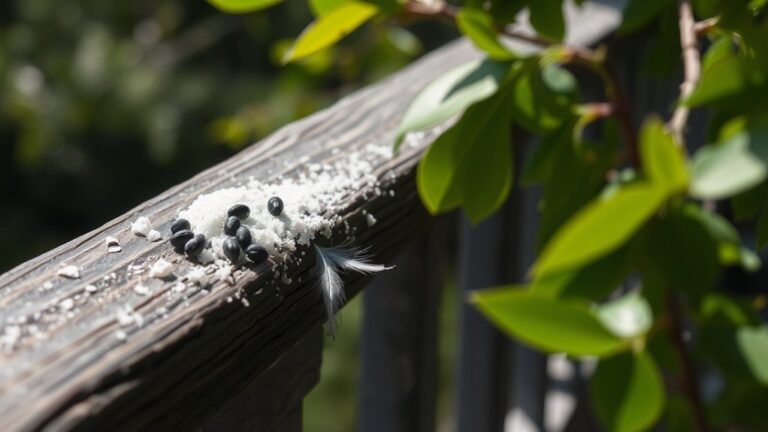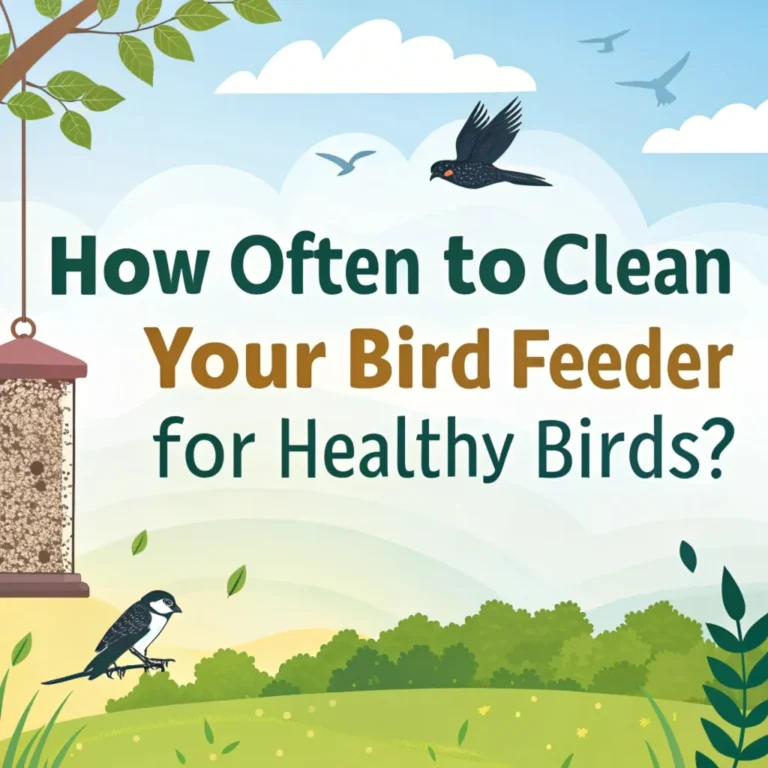Guide to Blue Birds in Virginia: Species & Identification Tips
Virginia is home to several blue bird species that showcase striking colors and unique behaviors. To identify these birds, pay close attention to specific features. For example, the Eastern Bluebird has a bright orange chest, while the Indigo Bunting displays vivid blue during its breeding season.
These birds prefer different habitats and exhibit various social behaviors, which can enhance your birdwatching experiences. If you're interested in attracting blue birds to your yard, consider offering appropriate food and nesting sites. Additionally, learn about the conservation efforts that support the survival of these beautiful species. With this knowledge, you can appreciate and contribute to the thriving blue bird populations in Virginia.
Key Takeaways
- The Eastern Bluebird has bright blue feathers and a rusty-orange chest. Female bluebirds have more muted colors.
- The Indigo Bunting is vibrant blue during breeding season. It migrates to Central America for winter.
- Blue Jays have striking blue feathers and black markings. They are known for loud calls and foraging acorns.
- To attract bluebirds, create nesting boxes and plant native flowers in your yard.
- Help bluebird conservation by using chemical-free methods and providing clean water sources.
Engaging with these beautiful birds can bring joy to your outdoor space. Watch as they flit about, adding color and life to your garden!
Overview of Blue Birds in Virginia

Bluebirds are a notable part of Virginia's wildlife. Their bright blue feathers make them easy to spot in open fields and orchards. During migration, they travel in small groups and often return to the same breeding sites each spring. This behavior shows their adaptability to different environments.
As bluebirds build nests, they exhibit interesting social interactions, often forming pairs to raise their young together.
Watching them search for insects and berries is delightful. Their activities provide a close connection to nature.
Learning about their migration routes can deepen your appreciation for these beautiful birds and the habitats they thrive in.
Eastern Bluebird: Identification and Habitat
Eastern bluebirds (Sialia sialis) are easy to recognize due to their bright colors and unique features.
Males have vivid blue feathers on their wings and back, with a rusty-orange chest. Females have more muted colors. You can usually find them in open fields, farmland, and near woodland edges.
They often sit on fence posts or low branches, looking for insects and berries. When they feed, they show quick movements as they catch beetles or eat fruit.
To attract these beautiful birds to your yard, you can put up nesting boxes and plant native plants. This will help them find food and encourage them to stay.
Indigo Bunting: Characteristics and Behavior

The indigo bunting (Passerina cyanea) attracts birdwatchers with its bright blue feathers, particularly the males during the breeding season.
This small songbird lives in areas with early vegetation, such as fields, shrubby spots, and edges of woodlands, where it feeds on seeds and insects.
Indigo buntings migrate from late summer to early fall. They travel long distances, sometimes thousands of miles, to reach their winter homes in Central America and Mexico.
Their strong urge to migrate and their ability to find their way using stars is interesting.
Watching these colorful birds and listening to their beautiful songs can increase your appreciation for them. It can also help you connect with other bird enthusiasts in Virginia.
Blue Jay: Recognizing This Common Bird
When you see a blue jay (Cyanocitta cristata), its vivid blue and white feathers stand out clearly. This bird's interesting behavior and diverse habitats make it fun to watch. Here are important details to note:
- Color: Blue jays have bright blue feathers on top with white and black markings.
- Sound: They make loud, clear calls to communicate with other birds.
- Behavior: Look for blue jays as they search the ground for acorns and other food.
- Habitat: These birds live in forests, parks, and gardens, showing they can adapt to different environments.
Enjoy observing blue jays in your area; their colors and activities make them a joy to watch!
Tree Swallow: A Beautiful Aerial Acrobatic

The tree swallow (Tachycineta bicolor) glides through the air with impressive skill. These birds catch insects mid-flight during aerial feeding. Their streamlined bodies and pointed wings help them make quick turns and reach high speeds, making them effective hunters.
Tree swallows prefer to nest in cavities. They often use old woodpecker holes or birdhouses. They build nests with grass and feathers to create a cozy space for their young.
You can find them in open areas near water, where they thrive. Their graceful flight and smart nesting habits make tree swallows an interesting species to observe in Virginia.
Blue-gray Gnatcatcher: Tiny and Charming
In Virginia, the blue-gray gnatcatcher (Polioptila caerulea) is a small, lively bird that captures the attention of birdwatchers.
With its energetic movements and distinctive high-pitched calls, this charming bird adds life to various habitats. You can find blue-gray gnatcatchers in:
- Deciduous forests
- Thick underbrush near water
- Open woodland edges
- Scrubby fields
These birds are known for their acrobatic foraging as they catch small insects and spiders.
Their adaptability to different environments, along with their engaging behavior, makes the blue-gray gnatcatcher a treasured part of Virginia's birdlife.
Whether you're a seasoned birdwatcher or a casual observer, spotting one of these delightful birds is always a treat.
Attracting Blue Birds to Your Backyard
Attracting blue birds to your backyard is a fulfilling task.
Start by placing bird feeders with high-quality seeds like sunflower or safflower. These seeds attract different blue bird species. Position the feeders near shrubs or trees for shelter from predators.
Next, add native plants to your garden. Serviceberry and dogwood trees are excellent choices as they provide natural food sources like berries and nectar.
Keep the area clean by regularly washing feeders and removing old food.
Additionally, include birdbaths for drinking and bathing.
Following these steps will help create a welcoming space for blue birds, allowing them to thrive and visit your backyard.
Enjoy the beauty of these birds as they become regular guests in your outdoor space.
Conservation Efforts for Blue Bird Species
Creating a welcoming space for blue birds enriches your backyard and aids in their conservation. Follow these simple steps to support their habitat:
- Nest Boxes: Place blue bird nest boxes to give them safe places to breed.
- Native Plants: Choose native bushes and trees to provide food and shelter.
- Chemical-Free Practices: Use natural gardening methods. Avoid chemicals that harm their food sources and living environments.
- Water Sources: Set up clean water areas for drinking and bathing.
By taking these actions, you help ensure blue birds thrive in your community.
Enjoy the beauty and activity these birds bring to your garden while supporting their essential conservation needs.
Frequently Asked Questions
What Is the Best Time to Observe Blue Birds in Virginia?
The best time to observe bluebirds in Virginia is in spring. During this season, bluebirds migrate and start nesting. You will see more activity as they establish their territories and collect nesting materials. This creates a lively and interesting scene to watch.
Are Blue Birds Migratory or Resident Species in Virginia?
Bluebirds in Virginia are mainly resident species. They breed in the spring and summer. While some bluebirds may migrate south for the winter, many stay in the area. These birds adapt to local conditions to survive and maintain their social bonds. Bluebirds add beauty to the environment and can often be seen in gardens and open spaces throughout the year.
What Plants Attract Blue Birds to My Garden?
To attract blue birds, place blue bird feeders with suitable seeds in your garden. Additionally, plant native shrubs such as holly or serviceberry. These plants offer food and shelter, making your garden a friendly place for blue birds. Enjoy watching these beautiful birds as they visit your garden!
Do Blue Birds Have Any Natural Predators in Virginia?
Yes, bluebirds have natural predators in Virginia. These include snakes, hawks, and domestic cats. These predators can be a danger, especially during the nesting season. Knowing these threats is important. You can make your garden safer for bluebirds by taking protective measures.
How Can I Help Conserve Blue Bird Habitats Locally?
You can help conserve bluebird habitats in your area by taking simple actions. Start by installing bluebird nest boxes. These boxes provide safe spaces for bluebirds to raise their young. Next, get involved with your community. Work with neighbors to take care of local natural areas. Plant native plants that attract bluebirds and other wildlife. Finally, share information with others about the importance of protecting these habitats. By making these efforts, you can contribute to a healthier environment for bluebirds and help preserve their homes.

Ava is a bird enthusiast and nature lover who has spent countless hours observing and learning about the fascinating world of birds. With a passion for sharing her knowledge and inspiring others to appreciate the beauty of birds, Ava writes about her experiences and insights on avianadmirer.com.







